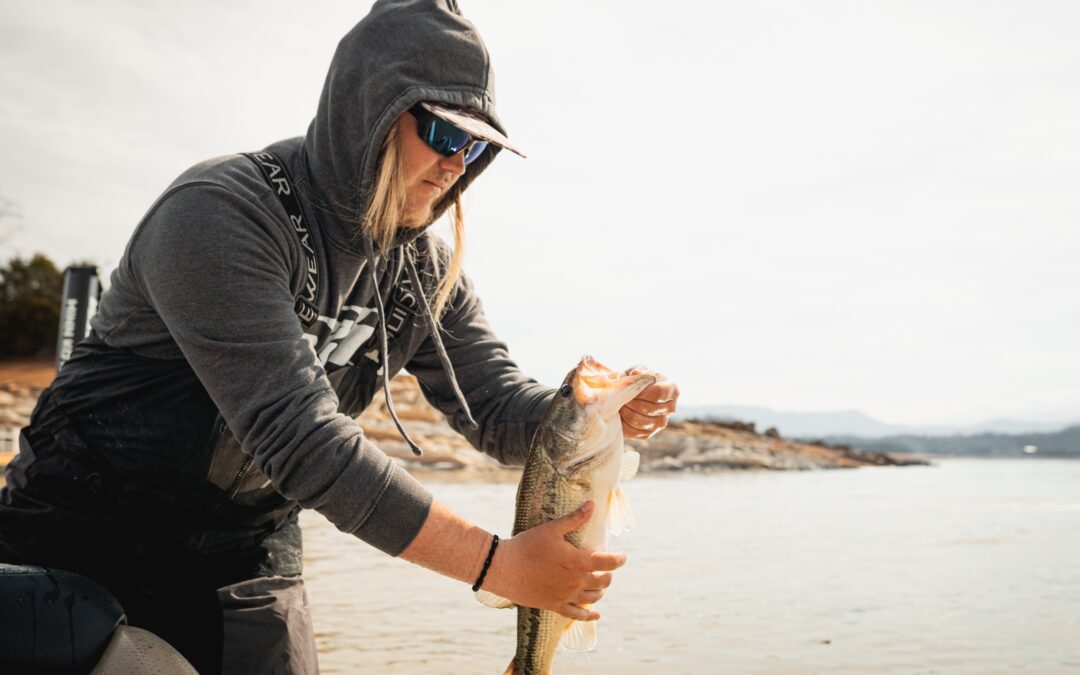As water temperatures settle into the 50s across Douglas Lake and Cherokee Lake, anglers are experiencing the shift from fall feeding patterns to early winter fishing. Both lakes are producing excellent action for largemouth and smallmouth bass, which can be found in both shallow and deep water during this transitional period.
Douglas Lake
Douglas Lake continues to fish well through the fall-to-winter transition, with bass scattered between shallow flats and deeper wintering areas. Crankbaits like the Rapala DT6 and DT10 remain top producers along rocky points, channel swings, and secondary structure. Chatterbaits, lipless crankbaits, and jigs are also effective for targeting fish holding around bait schools or scattered cover.
As the lake continues to cool, expect fish to group up in their traditional 20–40-foot winter haunts. This is when Silver Buddy–style blade baits, jigging spoons, jighead minnow baits, and Alabama rigs become especially productive. For suspended or finicky bass, a jerkbait worked along bluff walls or over main-lake points can trigger quality bites.
Douglas bass will often relate closely to the bottom in many areas, so keep that in mind on your next trip. Large shallow flats holding baitfish can still produce steady action until water temperatures dip closer to the 40s.
Cherokee Lake
Cherokee Lake is showing a similar late fall pattern, with both largemouth and smallmouth bass chasing open-water bait schools. Fish are moving between shallow zones and deeper offshore areas, so versatility is key. Use your electronics to locate concentrations of bait and bass in 20–40 feet of water, and sometimes even deeper.
Once located, blade baits, jigging spoons, and jighead minnow presentations can be highly effective. On warmer or sunny days, bass often push shallower, making crankbaits, lipless crankbaits, or chatterbaits great options around secondary points and flats.
This time of year, Cherokee’s bluff walls can also be extremely productive for both largemouth and smallmouth bass. A combination of crankbaits and jigs worked along these bluffs can produce consistent bites throughout the day.
Overall Outlook
Both Douglas and Cherokee Lakes are in the midst of the classic fall-to-winter transition, and conditions can change quickly. Anglers should stay flexible, adjusting presentations as fish move between shallow and deep patterns in response to changing weather and bait movement.
As water temperatures continue to drop, look for groups of bass forming offshore and rely on your electronics to locate and stay on active schools. With a variety of techniques producing—crankbaits, lipless cranks, chatterbaits, jigs, Alabama rigs, jerkbaits, and traditional deep-water baits—anglers have plenty of options to connect with quality bass on both lakes right now.
Plan Your Visit to Jefferson County, Tennessee
Whether you’re chasing trophy smallmouth, targeting deep-water schools of largemouth, or simply enjoying a day on the water, Jefferson County’s Douglas and Cherokee Lakes offer some of the best bass fishing in East Tennessee year-round.
Plan your next Lakeside of the Smokies fishing getaway and experience why anglers from across the region return season after season. Stay in a cozy lakeside cabin, hire a local guide to learn seasonal patterns, and explore the charming nearby towns of Dandridge and Jefferson City—both full of great dining, shopping, and scenic views.
Learn more about planning your fishing trip at VisitJeffersonCountyTN.com, and discover why Douglas and Cherokee Lakes are two of the South’s premier fishing destinations.

